An exceptional venue was chosen for the presentation of the new collection by the couturier Gianluca Saitto, which was the main attraction at the Bagatti Valsecchi Museum at the heart of the Fashion District during Milan Fashion Week.
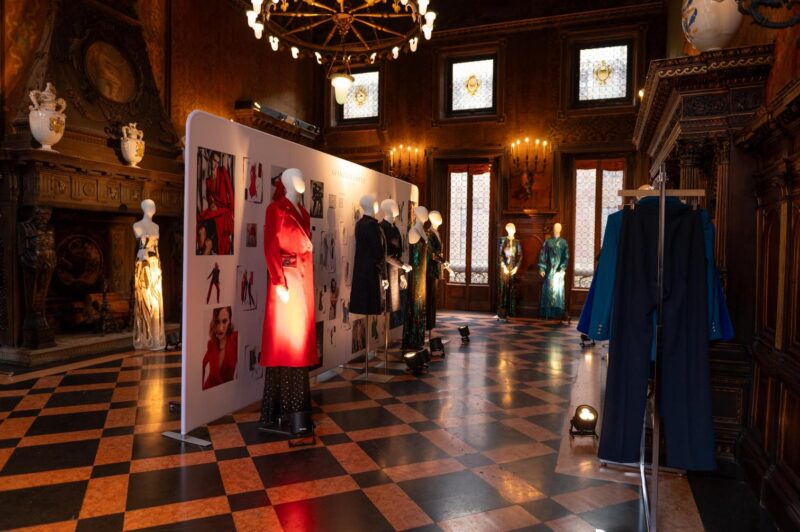
The points of reference for his Fall-Winter 2024-25 designs are the space and time coordinates of the Roaring Twenties when a perfect bridge was built between Europe and the United States. The suggestive eroticism of the surrealist masters and fine art nudity came to the fore in an explosive blend of the sacred and the profane, an effervescent joie de vivre and a poignant melancholy, the old and the new.
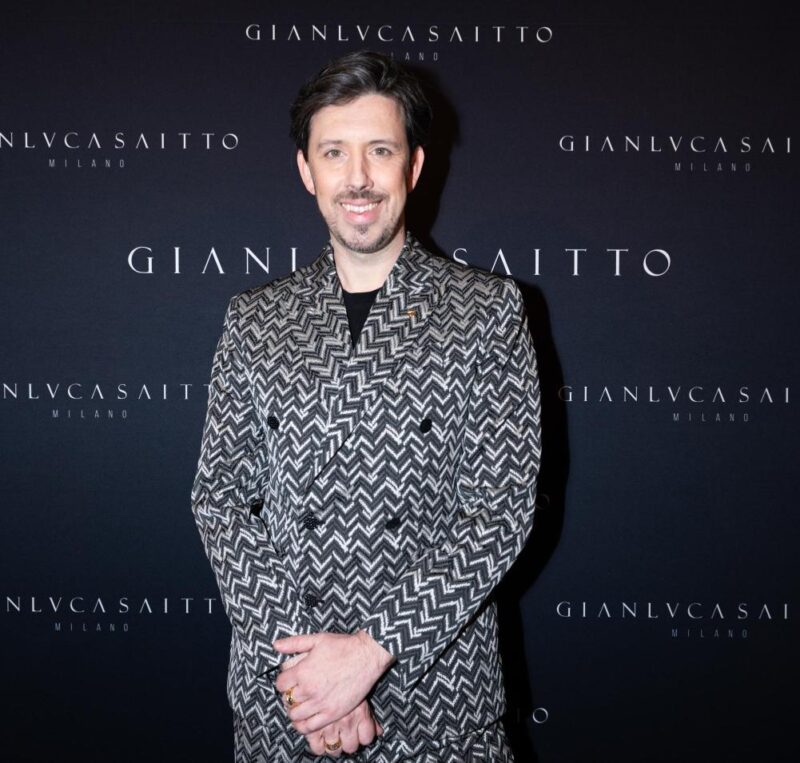
The flappers commandeered all this. They were women who broke the mould of suffocating conventionalism with explosive energy: they danced the Charleston, they smoked, they drove cars, and they acted and dressed à la garçonne, wearing their hair short and adopting an androgynous look checkered with sparkling accessories – sequins, tassels, and jingling necklaces. They were the personification of a certain je ne sais quoi, of the “quality possessed by some which draws all others with magnetic force”, in the words of the writer Elinor Glyn. They were the stars of the brightly-coloured portraits of Tamara Lempicka, the greatest interpreter of the luxurious, worldly, and carefree atmosphere that dominated the salons of the haute bourgeoisie and aristocrats of the Old Continent until the 1930s.

Gianluca Saitto draws his inspiration from all of this. He has connoted his collection with geometrical patterns, formal and textural refinement, and sensuality and eclecticism with a clear artistic vocation: the colour palette is rich with vibrant contrasts like the ones we find in Lempicka’s paintings, alternating intense shades of red, green, and light and dark blues that go from dark turquoise to navy to cornflower blue, with the addition of soft shades like white and pearl grey. The prints take us back to the sophisticated world of the artist’s most famous works, revisiting details from them and transferring them onto the surfaces of the outfits.
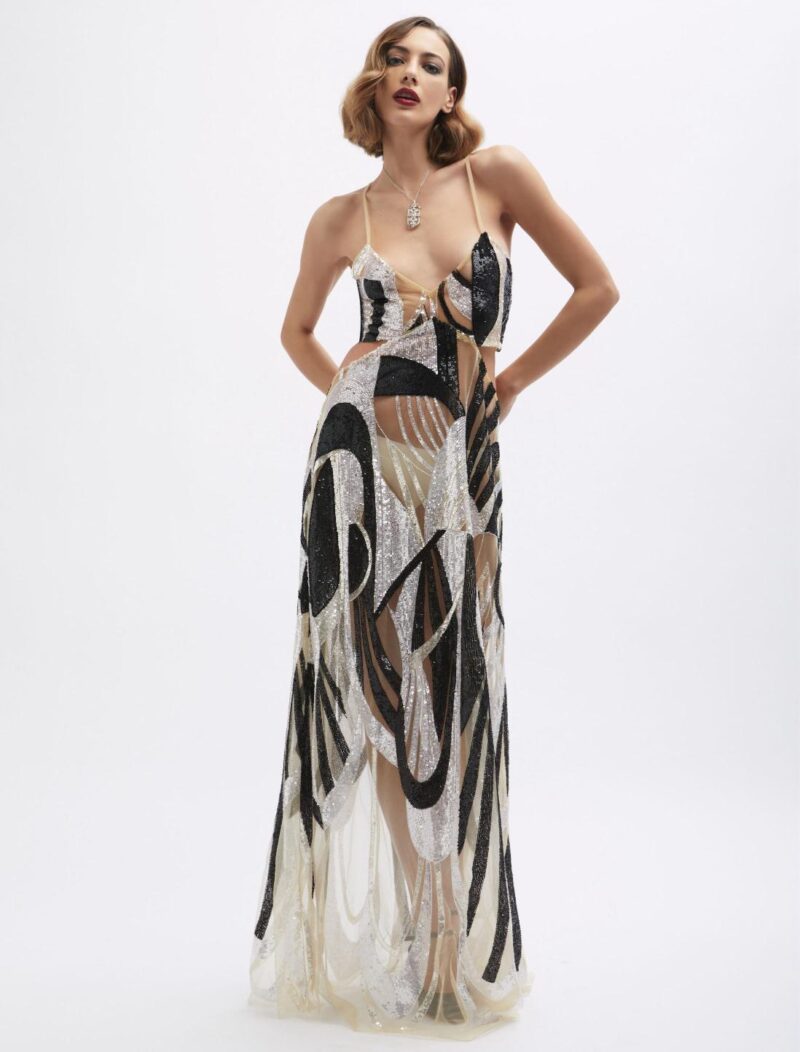
The unrestrained vitality of the leading lights of the 1920s is echoed in the collection’s versatility: cleanly and simply-cut pieces decorated with the elaborate embroidery that embodies the brand’s signature style stand alongside long dresses, caftans, jackets, and evening wear enlivened with sequins, rhinestones, and highlights. The meticulous tailoring of blazers, coats, jackets, and vests of different sizes and materials accompanies the charm of ruches and veils. Saitto has used various materials, from embroidered fabrics to jerseys with a three-dimensional effect, tweed, lurex, and jacquard.
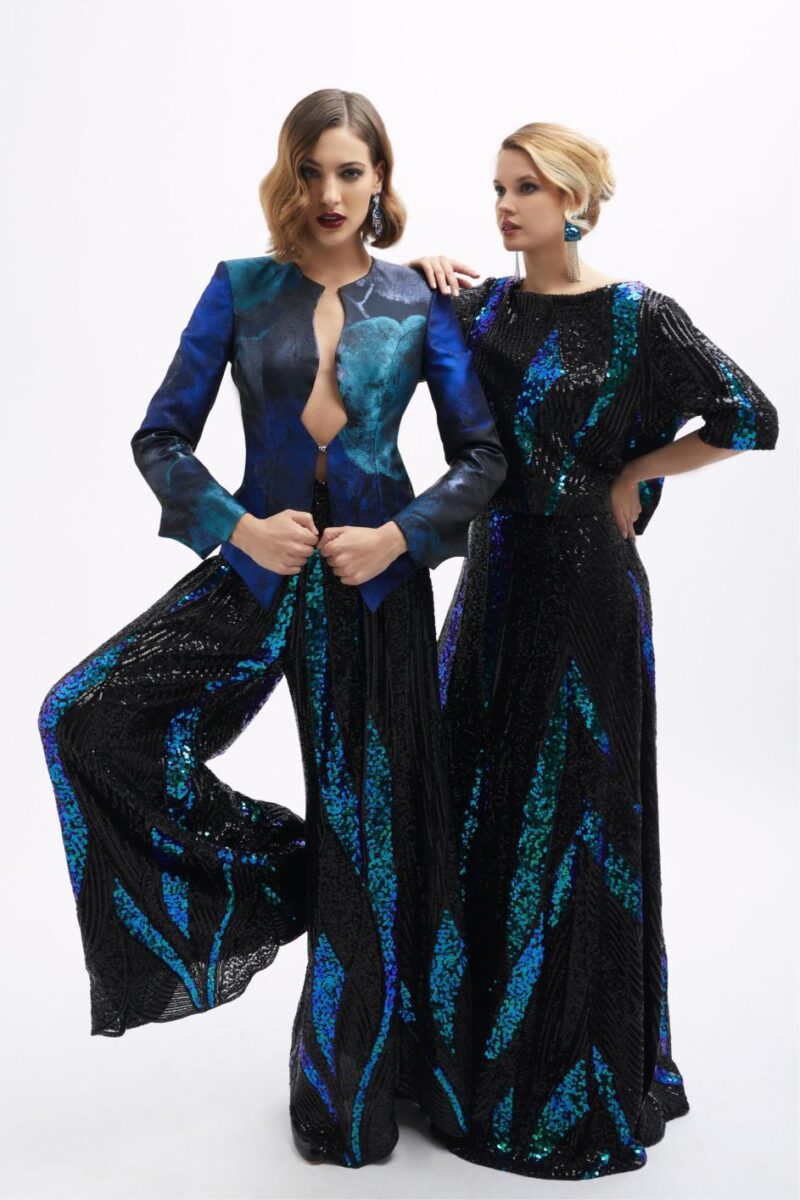
The silhouettes go from one extreme to the other, from ultra-close-fitting to flowing. The volumes are clean, sculpted by hems, contoured edges, asymmetries, and structured assembly. The shapes are further emphasised by the choice of shades used for the contrasting trims that frame the necks of the jackets and by the radiance of the embroidery that runs through the evening dresses. Slits, transparencies and necklines serve to emphasise the powerful and elegantly sensual personality of these daring, refined creations.
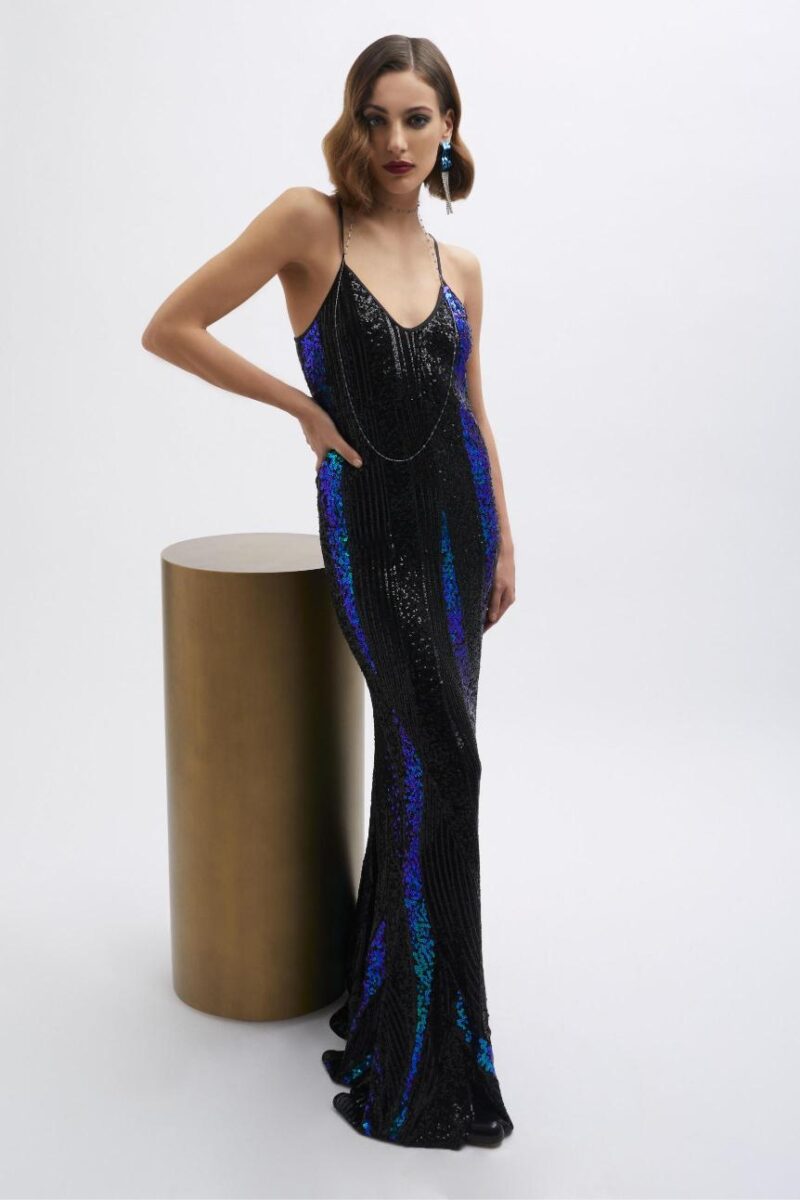
Gianluca’s love of art has led him to create new made-to-measure outfits for the staff of the Bagatti Valsecchi Museum, which is the product of an extraordinary story of art collectors in the nineteenth century. The neckline of the women’s jacket retraces the motif of the neo-Renaissance design of the wallpaper, creating a contoured effect, while the men’s jacket recalls the same motif but creates the opposite effect, playing on fullness and emptiness.
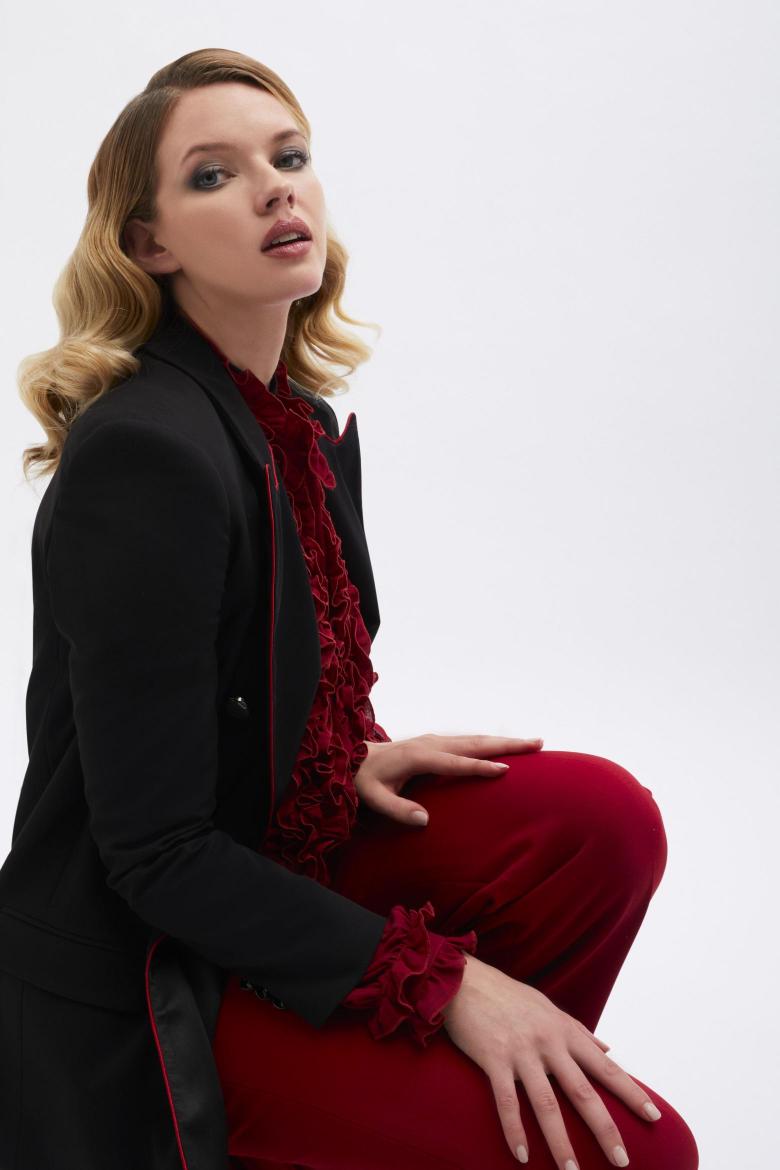
The lasered buttons are also inspired by the wallpaper, while the lining is taken from a print depicting the constellation globe housed in the library of the house museum.
Discover more @ Gianluca Saitto
Article edited by Claudia Chiari

